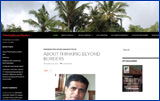At its peak, ISIS was a $1 billion economy, held area the size of Tamil Nadu
TNN
Iraq, 23 Oct 2017: On June 29, 2014, Abu Bakr al Baghdadi in Mosul declared himself the leader of Islamic State in Iraq and Greater Syria, a theocratic state that was supposed to run according to Sharia law with al Baghdadi as the Caliph — the religious successor to Prophet Mohammad.
With the recent fall of Raqqa, the de facto capital of IS+ , it seems that the regime of terror that attracted jihadists from across the world is over. This victory against IS followed the battle of Mosul — the largest city under its control from where it was driven out in July this year.
How big was IS at its peak?
According to the US department of defence, at its peak of territorial influence IS held between 1.07 lakh to 1.11 lakh sq km of land — mostly in northern Syria and northern and central Iraq. According to Rand Corporation, a US thinktank, IS territories had a population of over 11 million. By 2017, the territorial control fell to 45,377 sq km, with roughly 2.5 million people. With the fall of Raqqa and Mosul, it is believed that today the group retains only 10% of its peak territorial control.


From where did IS generate money to fund its operations?
Unlike other terrorist organisations, IS functioned as a sort of nation state with control on population and natural resources and so it was often called the richest terror outfit. A big chunk of its revenue came from taxes and fees levied on the population under its control. Oil also contributed to the group’s finances. Apart from these steady sources, it raised money from kidnapping for ransom, theft from government banks, sales of government equipment, etc. Naturally, with the loss of territory and population, IS’s revenue sources got drained and are supposed to go down further.

Who were fighting for the IS?
In the early days, IS was a rather regional phenomenon with recruits mostly from Arab states, including Tunisia, Saudi Arabia, Jordan and so on. Later, it effectively used social media for its propaganda to attract fighters from across the world. Starting from social media, the group was able to maintain direct contacts to recruit people from more than 80 countries. The numbers, however, started declining after its loss of territorial control.
How did IS rule affect the people under its control?
IS rule was initially welcomed in war-ravaged areas like Mosul and people willingly gave taxes to the group that promised to restore order. But soon the rule became totalitarian and with the government’s blockade as well as continuous fighting, it triggered the largest refugee crisis in recent history. With the fall of the regime, it is possible that many of the refugees could return.




 Write Comment
Write Comment E-Mail To a Friend
E-Mail To a Friend Facebook
Facebook Twitter
Twitter  Print
Print 














